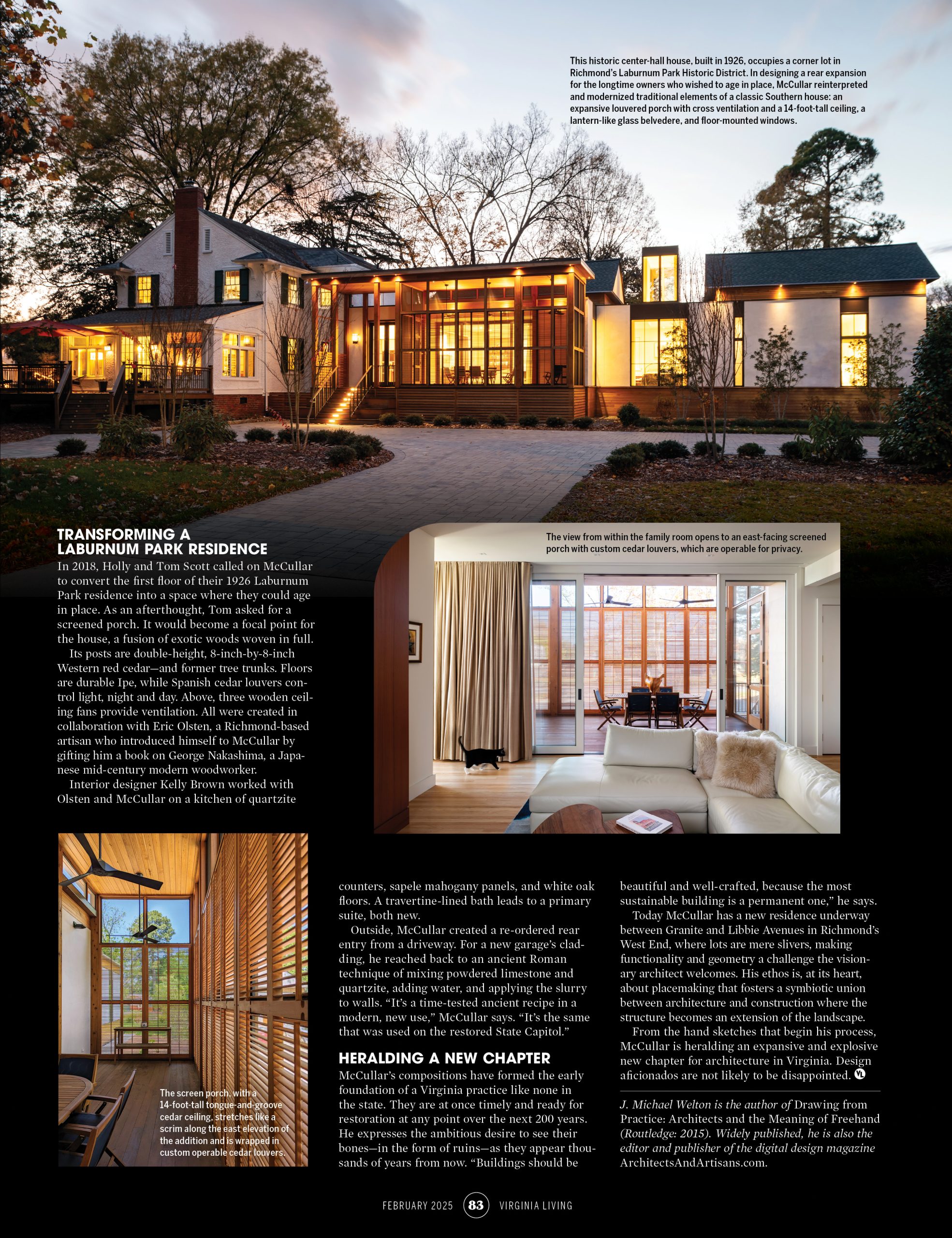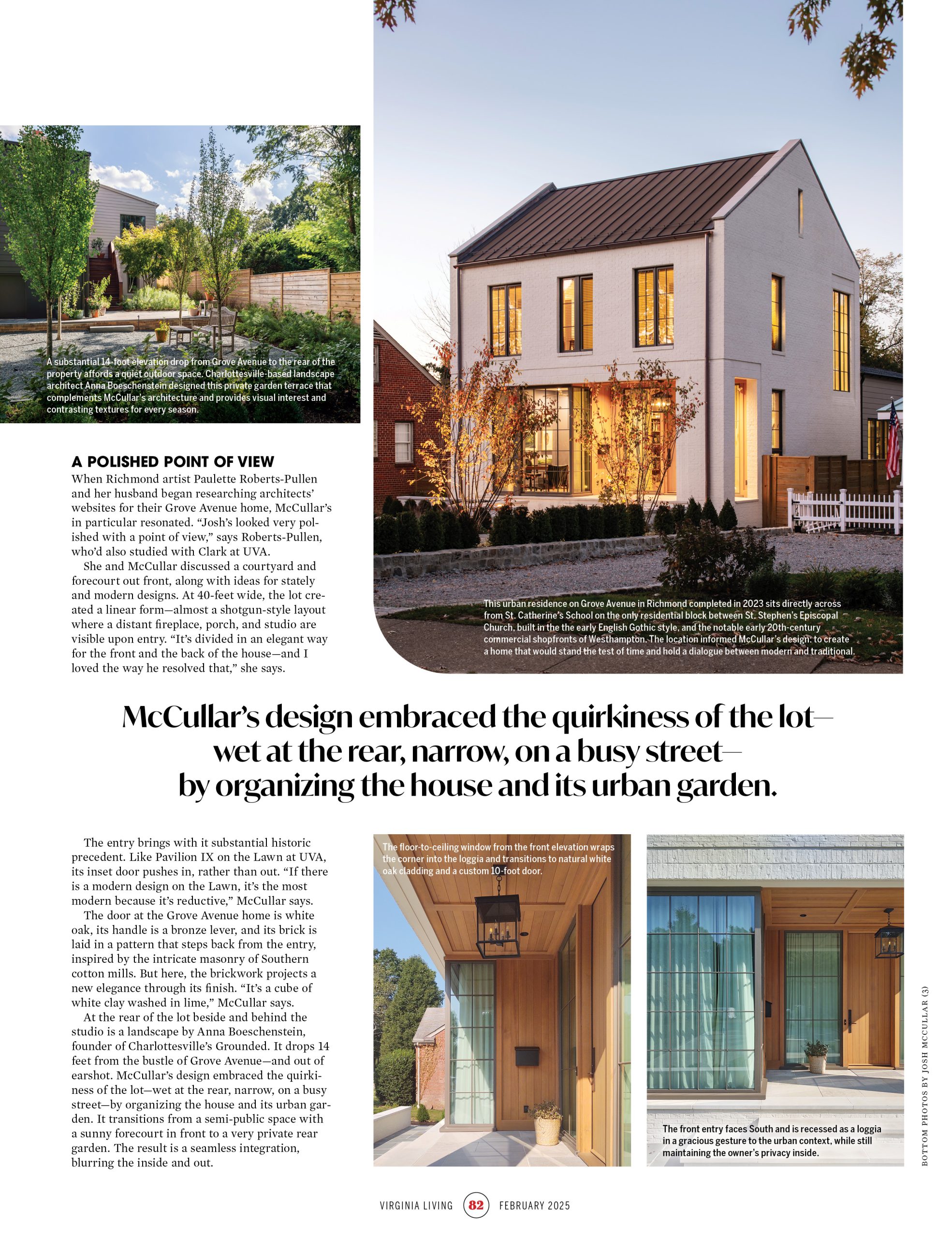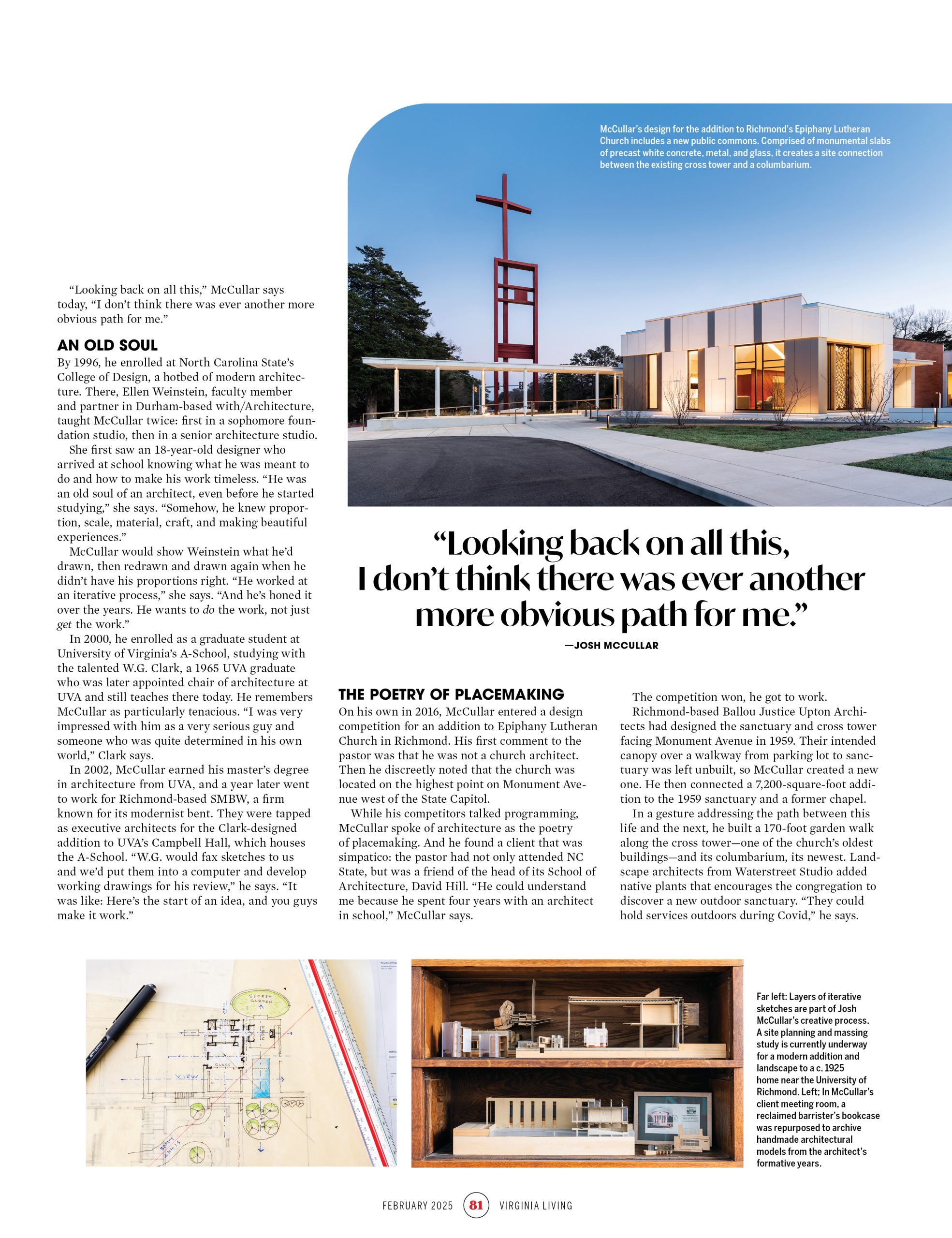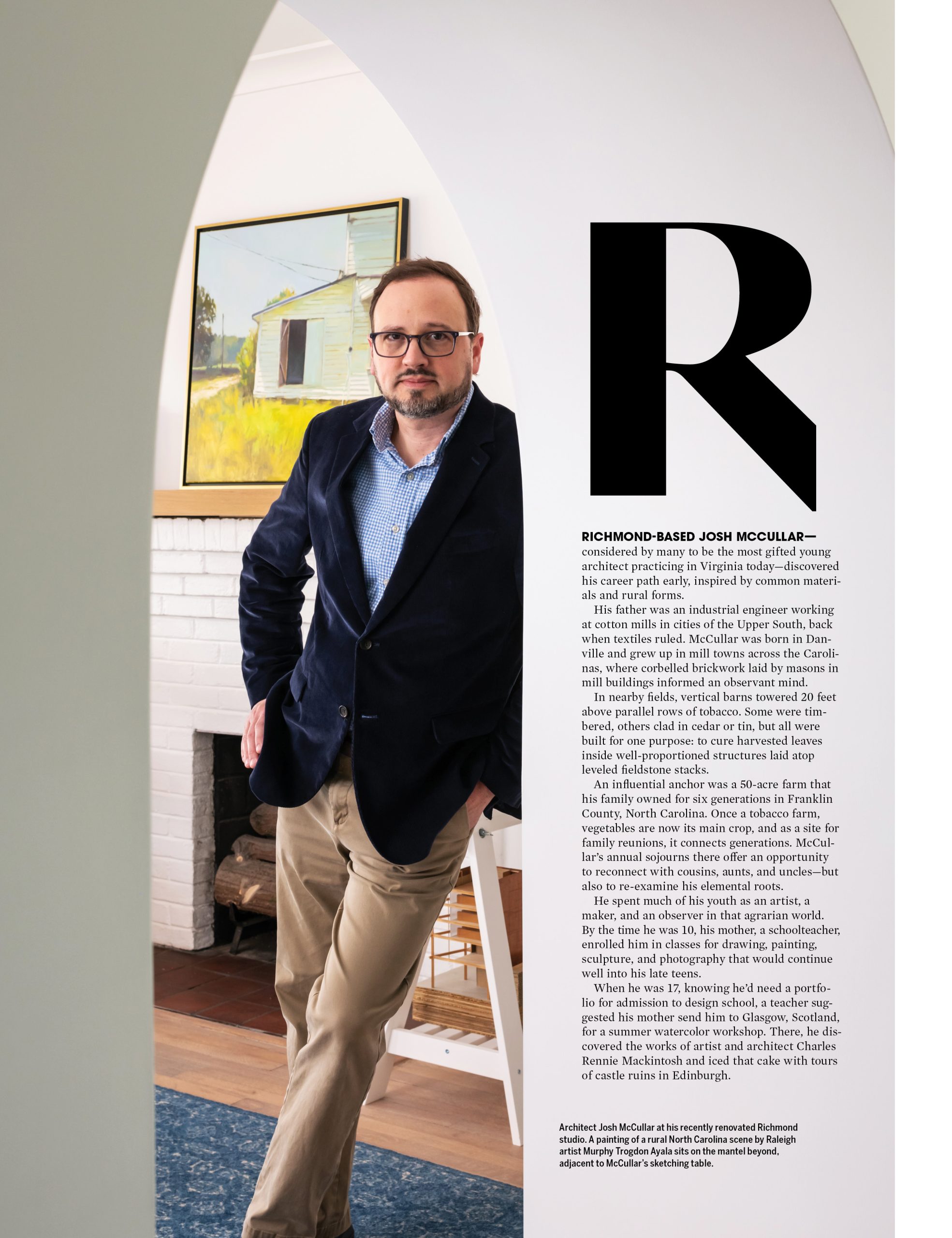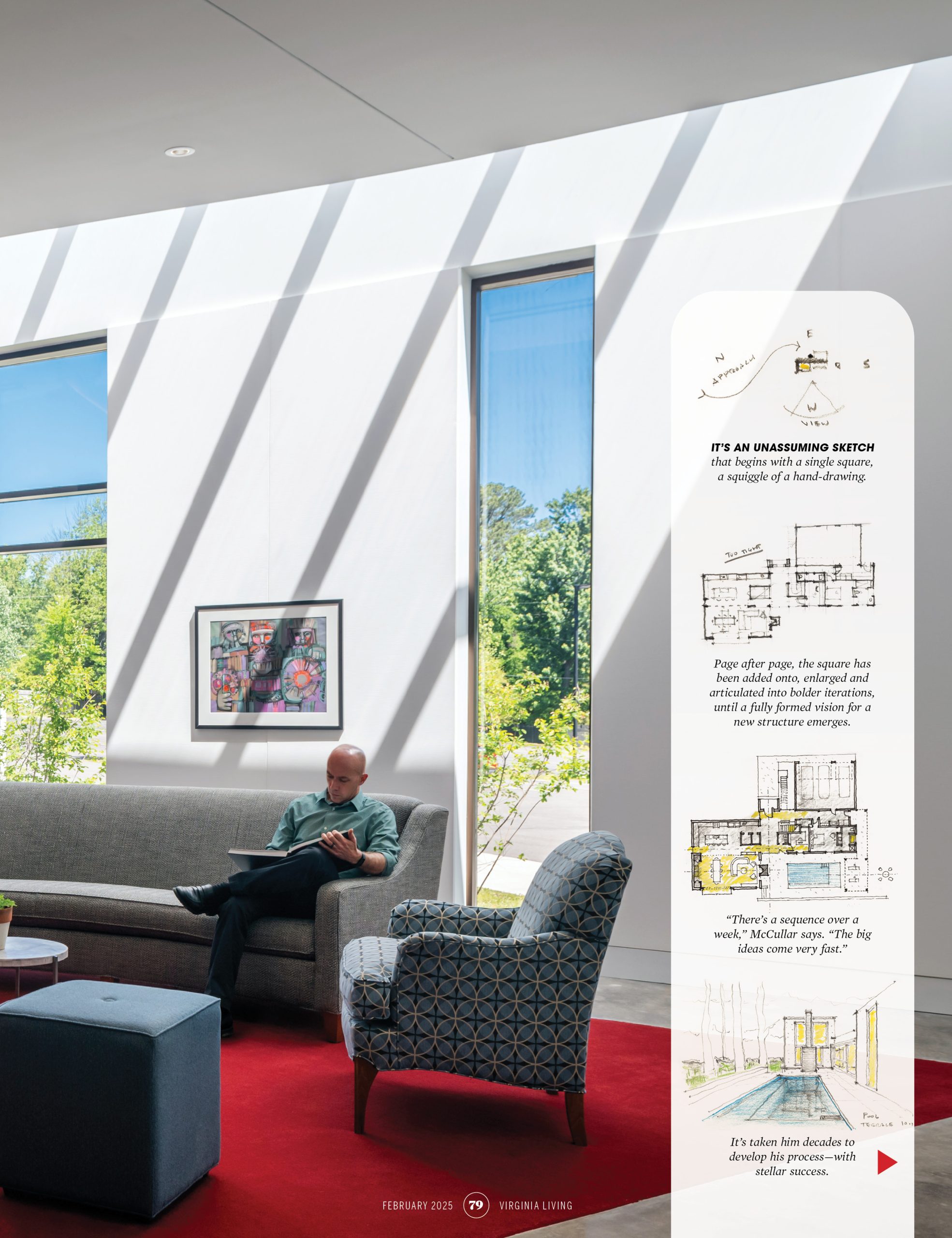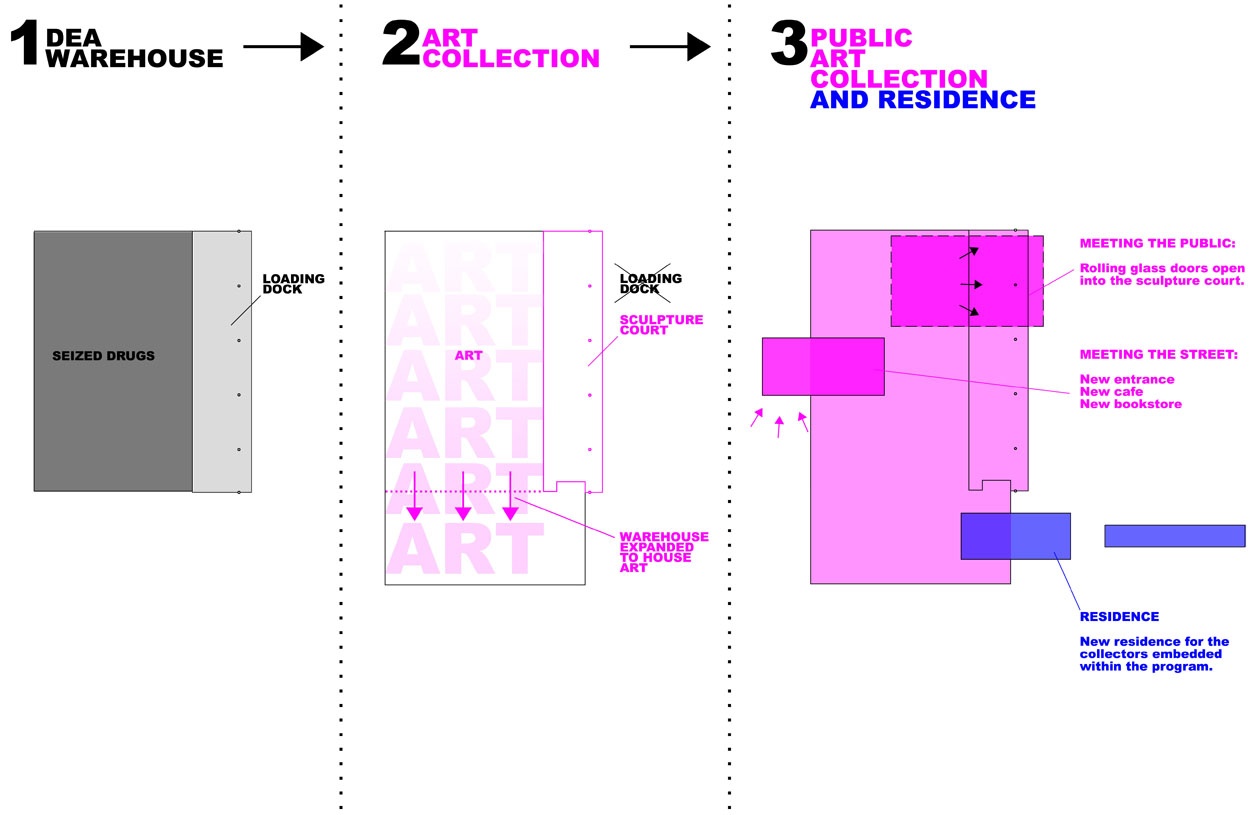Today A+A is following up on a recent issue of Virginia Living magazine that featured a profile of architect Josh McCullar. The second installment here covers two of his recent projects – one on Grove Avenue in Richmond’s West End, and a second in Laburnum Park on the city’s Northside:
By J. Michael Welton
A Polished Point of View
When Richmond artist Paulette Roberts-Pullen and her husband began researching architects’ websites for their Grove Avenue home, McCullar’s in particular resonated. “Josh’s looked very polished with a point of view,” says Roberts-Pullen, who’d also studied with Clark at UVA.
She and McCullar discussed a courtyard and forecourt out front, along with ideas for stately and modern designs. At 40-feet wide, the lot created a linear form—almost a shotgun-style layout where a distant fireplace, porch, and studio are visible upon entry. “It’s divided in an elegant way for the front and the back of the house—and I loved the way he resolved that,” she says.
The entry brings with it substantial historic precedent. Like Pavilion IX on the Lawn at UVA, its inset door pushes in, rather than out. “If there is a modern design on the Lawn, it’s the most modern because it’s reductive,” McCullar says.
The door at the Grove Avenue home is white oak, its handle is a bronze lever, and its brick is laid in a pattern that steps back from the entry, inspired by the intricate masonry of Southern cotton mills. But here, the brickwork projects a new elegance through its finish. “It’s a cube of white clay washed in lime,” McCullar says.
At the rear of the lot beside and behind the studio is a landscape by Anna Boeschenstein, founder of Charlottesville’s Grounded. It drops 14 feet from the bustle of Grove Avenue—and out of earshot. McCullar’s design embraced the quirkiness of the lot—wet at the rear, narrow, on a busy street—by organizing the house and its urban garden. It transitions from a semi-public space with a sunny forecourt in front to a very private rear garden. The result is a seamless integration, blurring the inside and out.
Transforming a Laburnum Park Residence
In 2018, Holly and Tom Scott called on McCullar to convert the first floor of their 1926 Laburnum Park residence into a space where they could age in place. As an afterthought, Tom asked for a screened porch. It would become a focal point for the house, a fusion of exotic woods woven in full.
Its posts are double-height, 8-inch-by-8-inch Western red cedar—and former tree trunks. Floors are durable Ipe, while Spanish cedar louvers control light, night and day. Above, three wooden ceiling fans provide ventilation. All were created in collaboration with Eric Olsten, a Richmond-based artisan who introduced himself to McCullar by gifting him a book on George Nakashima, a Japanese mid-century modern woodworker.
Interior designer Kelly Brown worked with Olsten and McCullar on a kitchen of quartzite counters, sapele mahogany panels, and white oak floors. A travertine-lined bath leads to a primary suite, both new.
Outside, McCullar created a re-ordered rear entry from a driveway. For a new garage’s cladding, he reached back to an ancient Roman technique of mixing powdered limestone and quartzite, adding water, and applying the slurry to walls. “It’s a time-tested ancient recipe in a modern, new use,” McCullar says. “It’s the same that was used on the restored State Capitol.”
Heralding a New Chapter
McCullar’s compositions have formed the early foundation of a Virginia practice like none in the state. They are at once timely and ready for restoration at any point over the next 200 years. He expresses the ambitious desire to see their bones—in the form of ruins—as they appear thousands of years from now. “Buildings should be beautiful and well-crafted, because the most sustainable building is a permanent one,” he says.
Today McCullar has a new residence underway between Granite and Libbie Avenues in Richmond’s West End, where lots are mere slivers, making functionality and geometry a challenge the visionary architect welcomes. His ethos is, at its heart, about placemaking that fosters a symbiotic union between architecture and construction where the structure becomes an extension of the landscape.
From the hand sketches that begin his process, McCullar is heralding an expansive and explosive new chapter for architecture in Virginia. Design aficionados are not likely to be disappointed.
From the hand sketches that begin his process, McCullar is heralding an expansive and explosive new chapter for architecture in Virginia. Design aficionados are not likely to be disappointed.
For more, go here.

